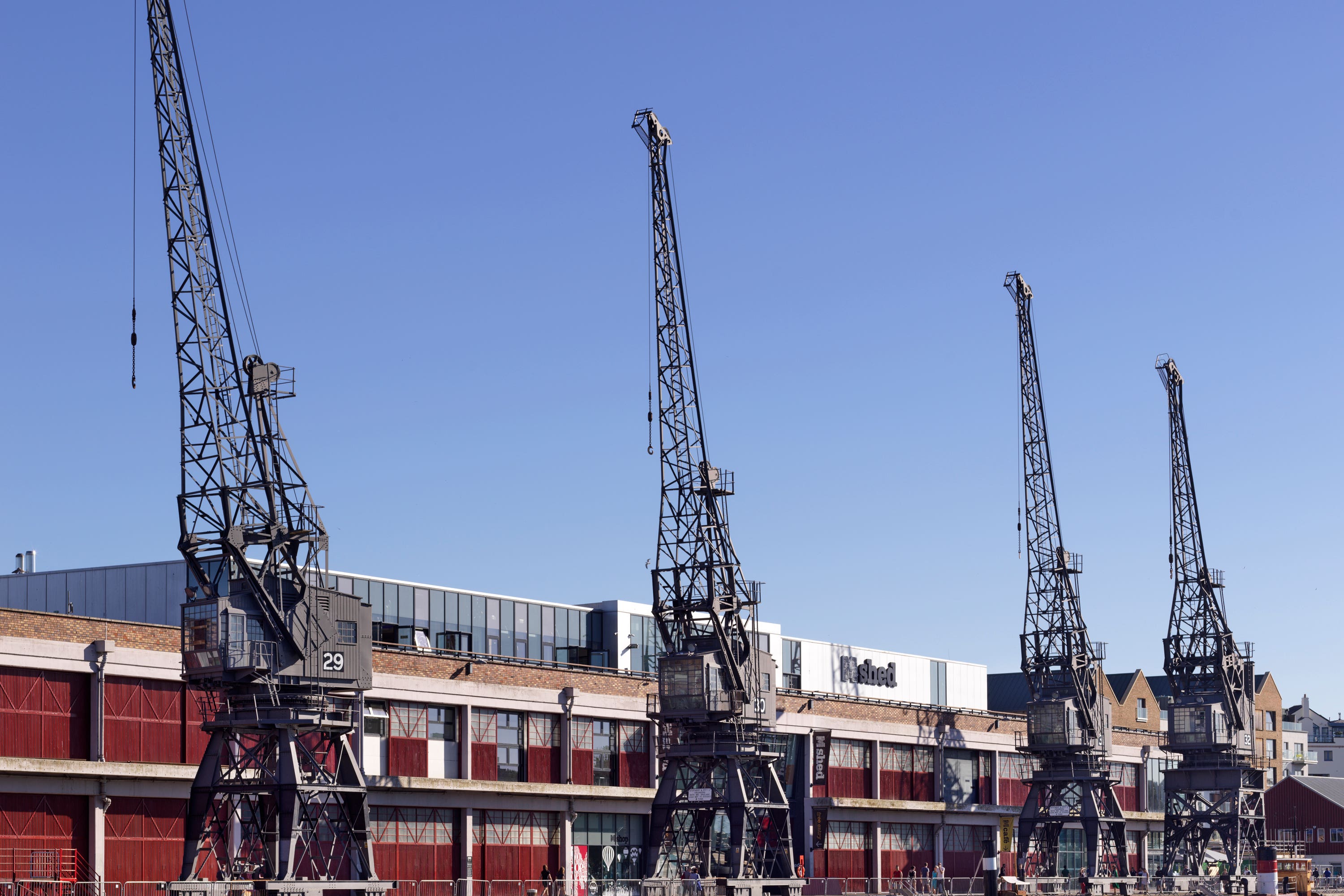Four rare electric cranes receive Grade II listing in Bristol
The cranes are the only group of Stothert and Pitt travelling cranes known to be in working order.

Four rare electric cranes in Bristol have been given a Grade II listing.
The cranes, erected in 1951 at Prince’s Wharf in Bristol and used to handle cargo, are the only group of Stothert and Pitt travelling cranes known to be in working order.
They remained in usage until the last trading ship off-loaded timber at the wharf in November 1974. The docks finally closed for good in 1977.
Their commanding presence attracts visitors to the harbourside and reminds people of how Bristol grew to be a major trading port
During its heyday a twice-weekly service ran between the Prince’s Wharf and Dublin, exporting English Ferguson tractors and importing Irish goods such as bacon, cabbage, butter and tanks of Guinness.
The cranes are now in the ownership of Bristol City Council and are part of Bristol Museums’ collection. They were originally part of a set of eight, however, four of the cranes were sold for scrap after the port closed, with two saved by City Dock Ventures and two saved by the council.
They were electrically powered to travel on train lines and contained a driver’s cab, motor room and two pairs of legs. The legs had driving wheels on either side, which powered the lateral movement of the cranes along the rails.
Rebecca Barrett, regional director for Historic England in the south west, said the cranes help to tell the story of Bristol’s maritime and industrial history.
“We are delighted that the iconic cranes at Prince’s Wharf have been listed at Grade II,” she said.
“They are an important link to Bristol’s maritime and industrial history and join other listed structures in the City Docks in helping to tell that story.
“Their commanding presence attracts visitors to the harbourside and reminds people of how Bristol grew to be a major trading port.”
Bookmark popover
Removed from bookmarks